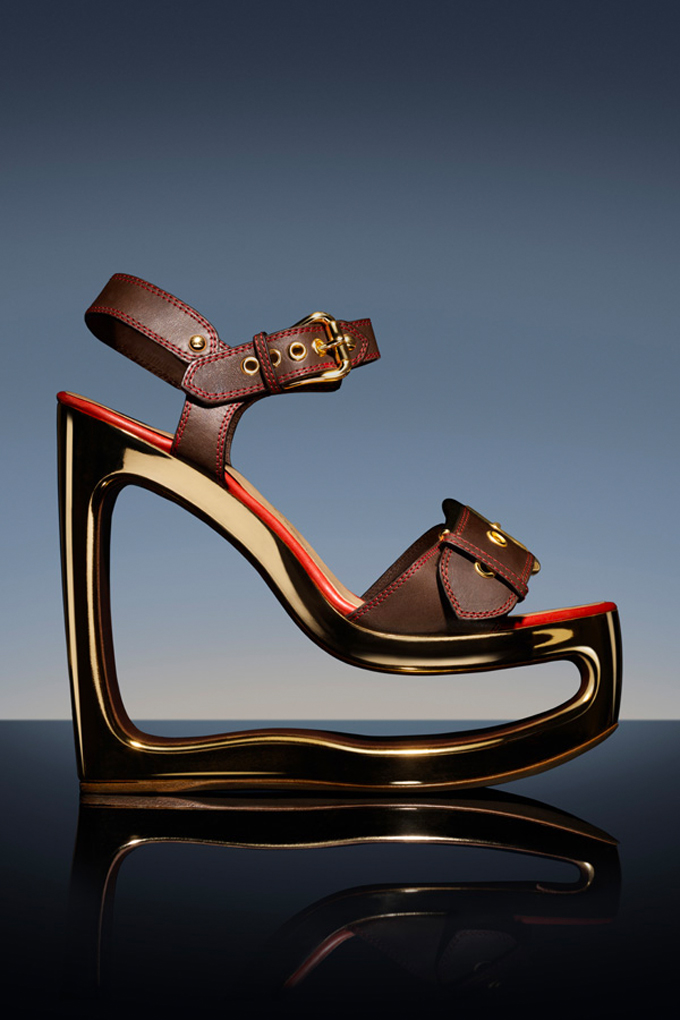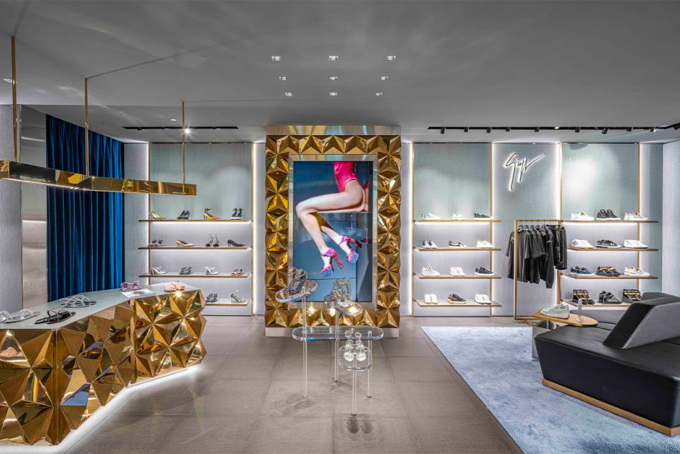Giuseppe Zanotti is a friend of music. Before he became the storied shoe-designer he is today and decades before Nicki Minaj rapped about her “monster Giuseppe heel[s]” in Kanye West’s hit track ‘Monster’, Zanotti was a radio DJ. His ambitions in that field were short-lived. In the 1980s, he hung up his headphones and set his sights on a new craft: producing beautiful and ferociously sought-after heels.
For a decade he apprenticed with local craftsmen in his village until in 1994, resources permitted him to open his own eponymous brand. His rise was swift and by 2000 his company had swelled from just 15 employees to a crew of 350. Soon after, he opened his first boutique in Milan. Stores in London, Stockholm, New York, Moscow, Paris and Dubai soon followed, but he never abandoned his first great love. Today, Zanotti’s shoes have become a right of passage to the world’s most formidable musicians and in conversation, it is clear that he analogises shoe-making to producing.

Zanotti’s creations are frequently referenced in hip-hop. Expertly toeing the line of glamorous and aspirational, they stand on heels as slim as ice picks, for unapologetic opulence and power. He set a precedent for successful collaborations with musicians years before it became industry practice, working with the likes of Kanye West in 2013 on a custom all-white rendition of “Midas touch” for the rapper’s ‘Cruel Summer’ compilation album. His “tattoo” sandal, named for the way its fringing and leather details create an ornate pattern on the foot, was worn by Beyoncé in her ‘Mirrors’ music video and Lady Gaga wore his “Venere” sandal—which is a vertiginous stiletto, featuring a serpent shaped coil on the body—to the launch party for her first fragrance in 2012. His “Adele” wedge broke all the rules and did away with the heel entirely, inspired by the elegant lines of Verner Panton’s classic 1967 “Panton” chair.


In March this year, Zanotti visited Singapore for the opening of his new flagship boutique at Marina Bay Sands. The 80 square metre space on the Galleria level is a temple of luxury, fitted with scotch-white brass, gold architectural fixtures, plexiglass shelving and suspended lighting. The store’s defining feature is a 3D golden pyramid pattern inspired by an iconic stiletto sandal from Zanotti’s archive.

In an hour long interview with Vogue Singapore during a trip to our Lion City earlier this year, Zanotti discusses music, shoes and the business’ post-pandemic revival.
When did you realise you wanted to start designing shoes?
When I was 17, I had aspirations of becoming a DJ, but that did not work out. In my village, there were a lot of companies that manufactured shoes but the pieces were horrible. I started as a consultant and the first pair of shoes that I designed was a flat sandal which I created for a female friend of mine. The second was a pair of boots inspired by Janet Joplin because she was like a Coachella type, a gypsy. This pair was soft, suede with a leather strap and very beautiful. This was an experiment because I never formally studied shoe design, but thanks to my love for music, everyone at these discos knew me for the shoes that I made. And every girl loved having these shoes, too.
Who would you say was your quintessential customer back when you started your career?
My customers were women who were young, spoiled, fun, sexy but not vulgar.
Music is an integral part of your design language. Who are some of your musician muses?
When I was a teenager, I was crazy for Donna Summer and Diana Ross. I also worked with Janet and Michael Jackson. I designed the shoes for the last show he ever performed before he passed away. On the 10th anniversary of his passing, we did an event in Las Vegas for COVID-19 and I met all of his family. I was so impressed by them.
“It is about straddling the line between commerciality and talent.”
When you look back on your career, what is one particularly special moment that stands out?
There are a lot of these instances, but I think one of the most important times was when I discovered that I have something in terms of perception and intuition. When I design, I listen to music. As a DJ, you listen to songs so often that you come to realise that there are some songs people find fabulous and there are others that people think are garbage. It is about straddling the line between commerciality and talent. I understand why artists do something commercial, popular and democratic for everyone.
When I start to do a collection every season, I try to translate this sensation of perception and intuition into a product. This is very technical but also with a sensitivity. I describe this as the moment when I discover the possibility to see life in another way.
Has your brand had to change to keep up with the times?
In terms of business, yes, because currently commerce constitutes 35% of the overall business. From the design to the prototypes, all of my pieces have a technological element to them. I then make use of 3D and 5D technology to cast a prototype before I make adjustments from feedback. This prototype is the foundation for how the piece turns out.
What do you think is next for the brand after COVID-19?
We are beginning the renaissance. We need to change our business models and our overall calendar, which, pre-Covid was crazy. It was a capsule collection after capsule collection, from Father’s Day and Chinese New Year to Black Friday and 11/11. I think we will focus on big collections that are global and seamless overall instead.





